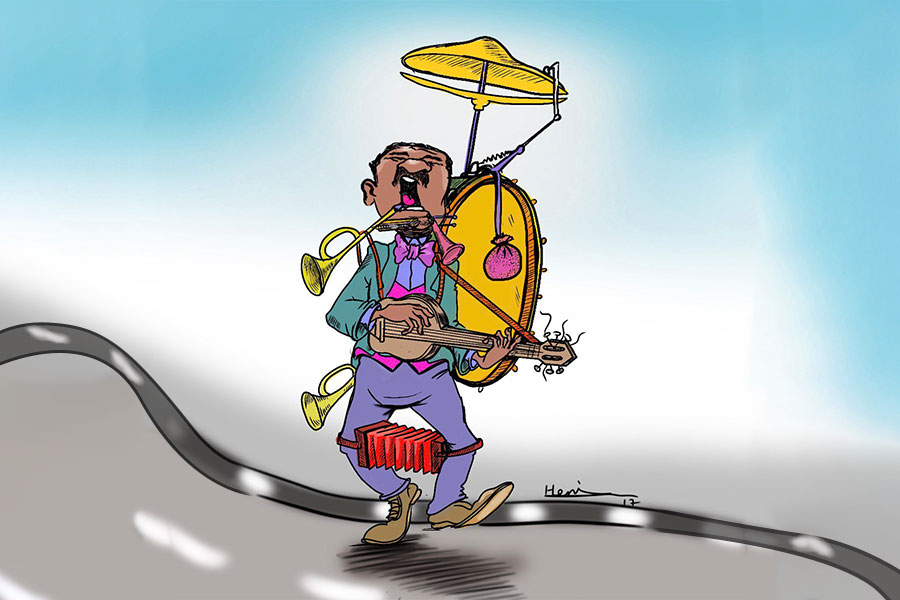
Photo Gallery | 148266 Views | May 06,2019
May 31 , 2025. By Kidist Yidnekachew ( Kidist Yidnekachew is interested in art, human nature and behaviour. She has studied psychology, journalism and communications and can be reached at (kaymina21@gmail.com) )
It is unsettling how often news surfaces of everyday household items leading to accidents, some unexpected, others devastating. A recent report about a moka pot explosion struck a familiar chord, stirring memories of TikTok clips that documented similar incidents involving these stovetop coffee makers. The frequency of such mishaps is alarming. There appears to be a pattern: devices exploding mid-brew, and confusion in their aftermath.
Sharing the report with my husband prompted a pointed observation: “It is because people do not know how to use them properly.” He recalled a disturbing example, someone blocking the steam valve on a moka pot, thinking it would stop a minor leak. The misguided attempt to “fix” the issue only sealed in pressure, turning a harmless coffee maker into a potential bomb. That conversation led to further reading, and everything I found echoed his point.
The risk is not the machine itself; it is the ignorance or neglect that surrounds its use. Moka pots, despite their ubiquitous presence and the rich, aromatic coffee they produce, harbour a rare but significant risk of explosion if not handled with care and understanding.
These pots are built on pressure. The lower boiler heats water until steam forces it upward through coffee grounds and into the upper chamber. For this process to unfold safely, each part – the gasket, the filter basket, the collector, the valve – must function precisely as intended. A clogged or damaged valve, overfilled water reservoir, too-finely ground or over-packed coffee, excessive heat, or a worn-out gasket can each destabilize that balance. When safety valves fail or users override them, what follows can be explosive; literally.
But the moka pot, as it turns out, is merely one example in a broader pattern. My husband often returns to the same point: tools, devices, even basic procedures, are mishandled not from malice but from a fatal mix of unfamiliarity and arrogance. Years ago, during a visit to a garage, he noticed a mechanic omit three essential bolts during a car repair.
When challenged, the mechanic, with a baffling air of authority, dismissed them as “useless.” It took insistent protest to have them reinstalled. “Why,” my husband asked, “would the engineers who painstakingly designed this car include bolts that serve no function?”
The same disbelief surfaced when he described an incident involving a self-described electrician, someone working without rubber-soled shoes on a live, three-phase system. The man connected two positive wires, suffered an electric shock, and fell from the fourth floor. A basic safety measure ignored. A predictable result.
These stories, vivid and unsettling, are not isolated. They accumulate over time, each one reflecting a larger, troubling truth. The assumption that something unnecessary can be discarded without consequence is a persistent flaw in how many approach work, risk, and responsibility. The rationale often boils down to expedience: a desire to “just get it done,” with little patience for procedures deemed “superfluous.”
It is remarkable how frequently individuals, professionals included, disregard basic safety measures with startling confidence. In doing so, they endanger not only themselves but those around them. What complicates matters further is the illusion of expertise. Many who take these risks speak with authority, yet their understanding often rests on shaky foundations: a patchwork of observation, partial experience, or insufficient training. The result is a kind of misplaced certainty that can prove more hazardous than ignorance itself.
Yet every component in a machine or structure has a purpose, whether visible or not. Engineers do not add bolts, valves, or wires for decoration. These parts exist because, at some point in the design process, someone anticipated a need, a risk, or a failure point. Without a full grasp of how each component functions, disregarding them is not just careless, it borders on reckless.
The logic applies universally. Consider the drivers who breeze through red lights, convinced no harm will come. Traffic lights are not ornamental. They exist because chaos is the alternative.
There is a strange contradiction embedded in human behaviour. People may revere old traditions or superstitions, fearing that breaking them could invite misfortune. And yet, modern safety regulations, grounded in empirical evidence and often written in the aftermath of tragedy, are routinely ignored.
The disconnect between imagined risks and real dangers, between superstition and science, speaks to a deeper contradiction in how people navigate an increasingly complex world. It is a paradox both sobering and persistent.
Modern life is filled with systems and safeguards designed to keep harm at bay. But those safeguards mean little if ignored. Understanding them is not just helpful, it is essential. Because the tools built to protect can just as easily injure when misunderstood.
PUBLISHED ON
May 31,2025 [ VOL
26 , NO
1309]

Photo Gallery | 148266 Views | May 06,2019

Photo Gallery | 138394 Views | Apr 26,2019

My Opinion | 134482 Views | Aug 14,2021

My Opinion | 131053 Views | Aug 21,2021

Aug 30 , 2025
For Germans, Otto von Bismarck is first remembered as the architect of a unified nati...

Aug 23 , 2025
Banks have a new obsession. After decades chasing deposits and, more recently, digita...

Aug 16 , 2025
A decade ago, a case in the United States (US) jolted Wall Street. An ambulance opera...

Aug 9 , 2025
In the 14th Century, the Egyptian scholar Ibn Khaldun drew a neat curve in the sand....